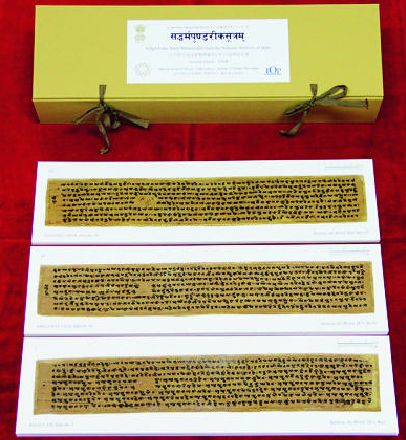NEW DELHI: The Gilgit Lotus Sutra Manuscripts, discovered by cattle grazers in Gilgit in a Buddhist stupa in 1931, are set to be released in a facsimile edition in New Delhi on Thursday.
The rare manuscripts, housed with the National Archives of India, date back to 5th-6th century AD and are perhaps the only body of Buddhist manuscripts discovered in India. This is not just the oldest surviving manuscript collection in India but also one of the oldest manuscripts in the world.
The first set of the Gilgit Lotus Sutra Manuscripts was found in a wooden box inside a circular chamber of a Buddhist stupa in Gilgit in 1931, now in Pakistan-occupied Kashmir. Sources at the National Archives informed that the ancient manuscripts had managed to survive for centuries due to two vital reasons – the near-zero temperatures of the region and the fact that the manuscripts were written on the bark of the Bhoj (birch) tree that does not decay. Upon discovery, the manuscripts were sent to Srinagar where the reputed British archaeologist Sir Aurel Stein – knighted for his discovery of rare Buddhist manuscripts at the Mogao Caves near Dunhuang in China in 1907 – studied them and announced the big find to the world.
The Lotus Sutra is one of the most revered scriptures of the Mahayana Buddhism and represents the discourse delivered by the Buddha towards the end of his life. The sutra was originally written in the Buddhist form of Sanskrit in the Sharada script and known by its Sanskrit title, Saddharma Pundarika Sutra, which when translated in English means ‘Sutra of the White Lotus of the Sublime Dharma’. It is popularly referred to as the Lotus Sutra and was first translated from Sanskrit to Chinese by scholar Zhu Fahu (Dharmaraksha) in 286 CE. It is one of the most important texts discovered in the corpus of Gilgit manuscripts. All the texts in the Gilgit corpus throw significant light on the evolution of Sanskrit, Chinese, Korean, Japanese and Tibetan literature.
In 2006, the Gilgit manuscripts were unsuccessfully nominated for inclusion in the Unesco Memory of the World register.
The facsimile edition releasing on Thursday is the result of a joint project between the National Archives of India, Institute of Oriental Philosophy and Soka Gakkai, the UN-recognized NGO working for the spread of the Lotus Sutra.
SOURCE: The Times of India

